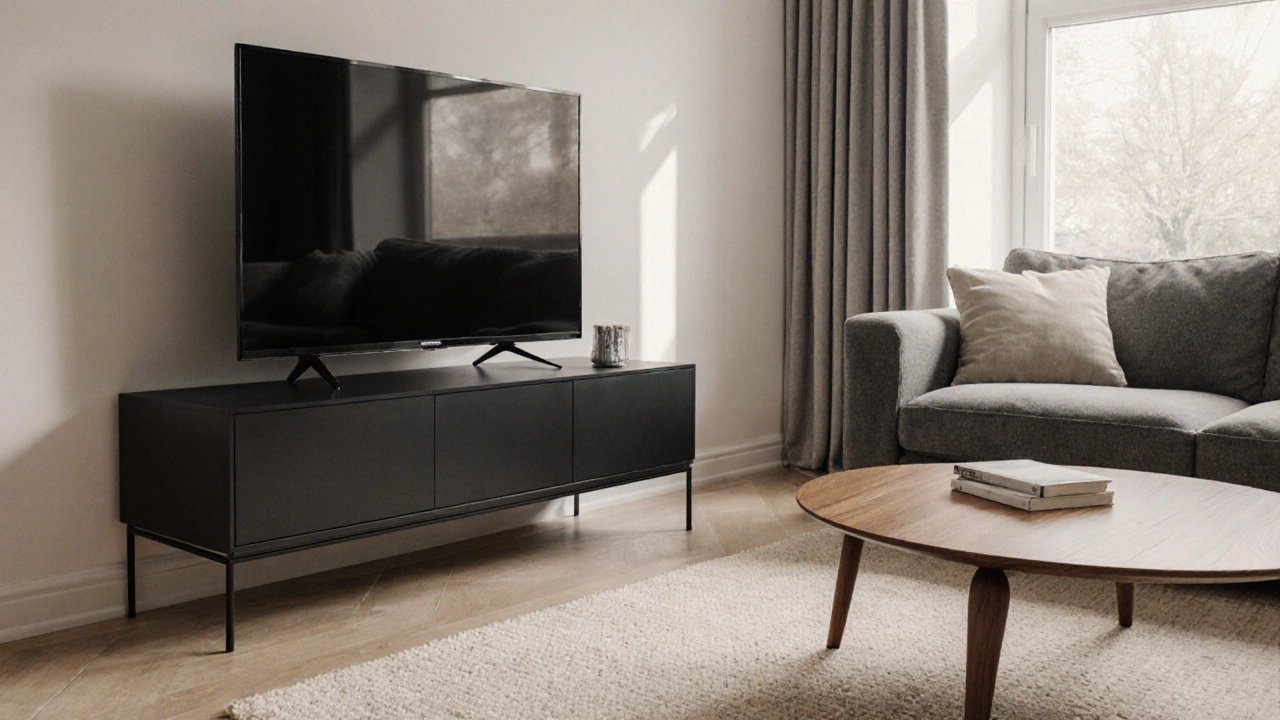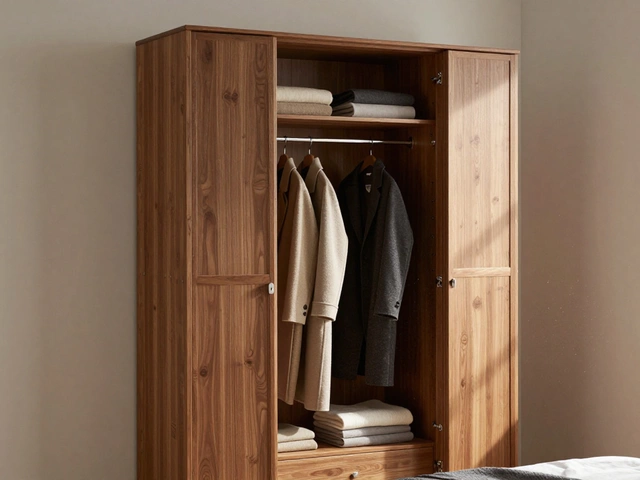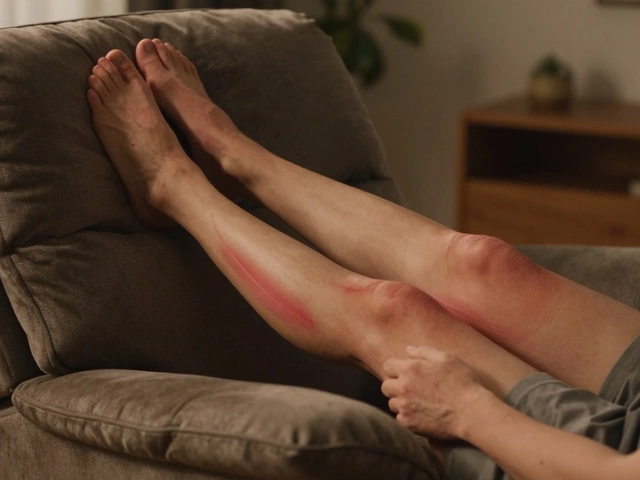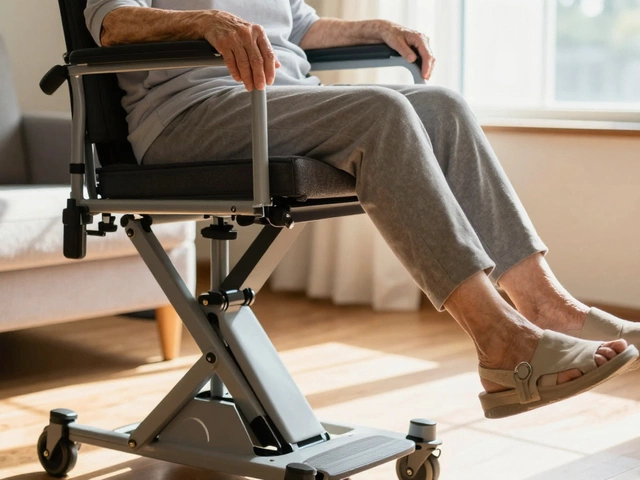Furniture Harmony Checker
Check Your Furniture Harmony
Determine if your TV stand and coffee table will create visual harmony using principles from the article.
When you’re setting up a living room, the first thing that often pops into mind is where the TV will sit. But the question that lingers is whether the TV stand a piece of furniture designed to hold your television and related equipment has to look exactly like the coffee table a low table placed in front of a sofa for drinks, books, and décor items. The answer isn’t a simple yes or no - it’s a mix of style, function, and personal taste. Below we break down the key decisions you’ll face, give you a checklist to avoid common mistakes, and show how to blend or contrast pieces without creating visual chaos.
Key Takeaways
- Matching isn’t mandatory; harmony matters more than exact sameness.
- Use a unifying element - material, color, or shape - to tie pieces together.
- Contrast can add personality when balanced with consistent accents.
- Consider room scale, traffic flow, and functional needs before choosing finishes.
- Apply the quick checklist at the end to validate your final layout.
Why Exact Matching Is Rarely Required
Design history shows that perfect matches were popular in the 1950s with full‑room sets, but modern interiors favor TV stand diversity. People mix wood, metal, glass, and even marble in a single space. The goal is visual cohesion, not a cloned look. Think of a music playlist: songs can differ in genre but still belong to the same vibe because of rhythm or mood. Furniture works the same way - you can pair a sleek metal TV stand with a warm wooden coffee table as long as something ties them together.
Three Ways to Create Visual Unity
When deciding if your pieces should match, start with one of three unifying strategies.
- Material Harmony: Choose the same primary material for both items. A wood finish the surface treatment that showcases the grain and color of timber on the TV stand and coffee table instantly signals connection, even if the grain patterns differ.
- Color Coordination: Select a complementary color palette. If the TV stand is painted matte black, a coffee table with a black metal frame or a dark walnut top will echo that hue without being identical.
- Shape Consistency: Match geometric cues. Rounded legs on both pieces or a shared angular silhouette can unify the look, regardless of material.
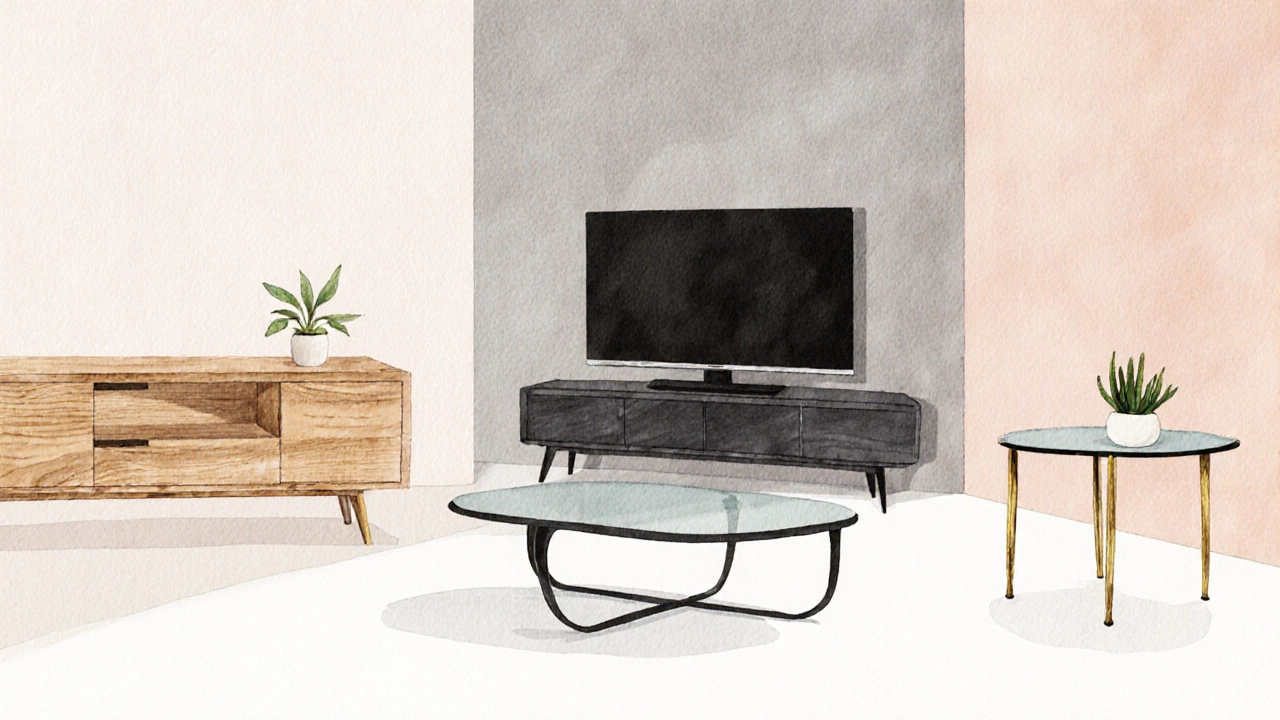
When Contrasting Can Work Better
Contrast isn’t a design flaw - it’s a way to add depth. Here’s how to pull it off safely.
- Anchor with a neutral base: A neutral living room the central gathering space of a home palette (beige, gray, white) lets bold pieces stand out without clashing.
- Introduce a third linking element: Add a side table, rug, or décor item that borrows features from both the TV stand and coffee table. For example, a gold‑leafed tray on a glass coffee table can echo a brass TV stand accent.
- Keep proportions balanced: If the TV stand is low‑profile, pair it with a slightly taller coffee table, but maintain a proportional ratio (about 1:1.2) to avoid visual imbalance.
Material Match‑Ups: Pros and Cons
| Pairing | Pros | Cons | Best For |
|---|---|---|---|
| Wood+Wood | Warm, cohesive look; easy to match grain | Can feel overly traditional if not mixed with modern accents | Classic or rustic interiors |
| Metal+Metal | Industrial vibe; durable | May feel cold without soft textures | Loft or contemporary spaces |
| Glass+Wood | Lightness vs. warmth; visual contrast | Glass can show fingerprints; mismatch if tones clash | Modern minimalism |
| Marble+Metal | Luxurious, high‑contrast elegance | Expensive; heavy | High‑end designer rooms |
Style Pairings You Can Trust
Below are common style combos that either blend seamlessly or deliberately clash.
- Mid‑Century Modern + Contemporary: Both favor clean lines. Pair a walnut TV stand with a glass coffee table that has thin steel legs. The shared low profile unifies the look.
- Scandinavian + Industrial: Light wood TV stand with a black metal coffee table creates a balanced mix of soft and gritty.
- Traditional + Minimalist: A dark wood TV stand next to a plain white marble coffee table can work if you add a neutral rug to soften the contrast.
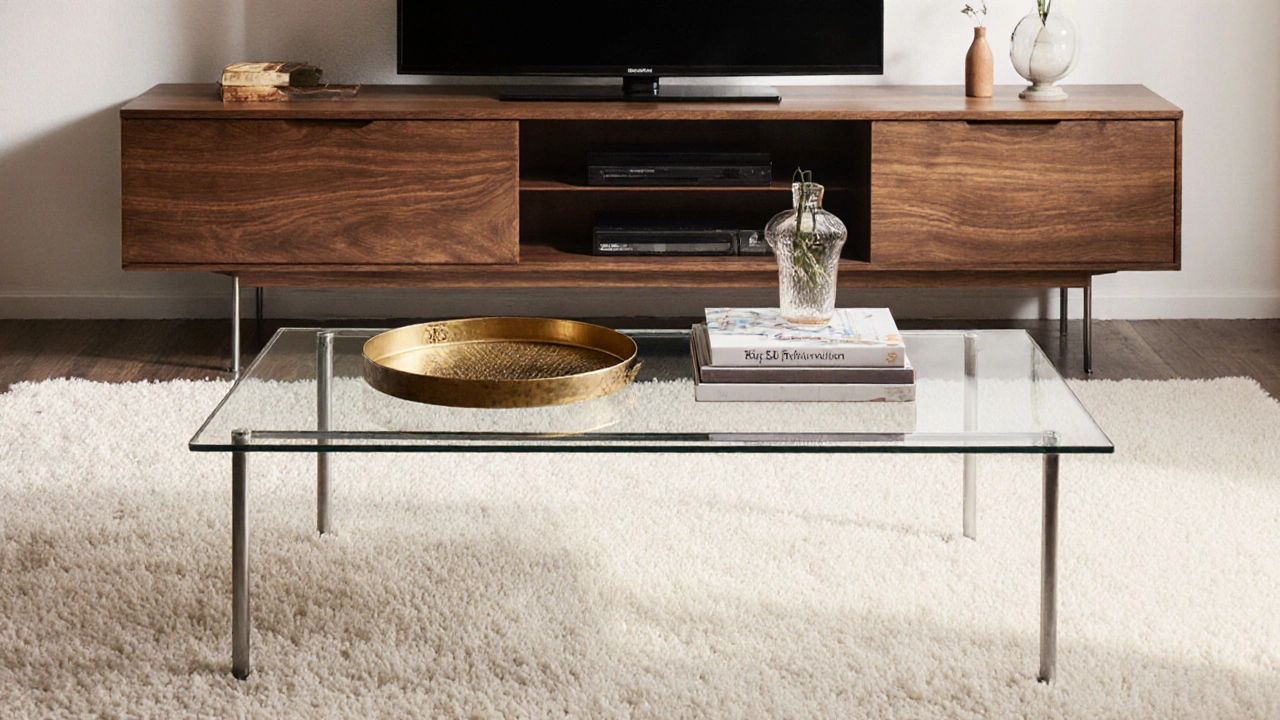
Practical Checklist Before You Buy
Run through these points to make sure your final choice feels right in the space.
- Measure the TV stand height and coffee table height; target a 1:1.2 ratio.
- Identify a unifying element - material, color, or shape.
- Check the finish durability for each piece (laminated wood vs. solid oak).
- Visualize traffic flow - ensure the coffee table doesn’t block pathways around the TV.
- Place a rug or accent piece that pulls both items together.
- Take a photo of your layout; step away for 10 minutes and see if it feels balanced.
Common Mistakes and How to Fix Them
Even seasoned decorators slip up. Spot these red flags early.
- Too many competing finishes: If you have a glossy TV stand, a matte coffee table will clash unless you introduce a neutral accent (e.g., a woven basket).
- Scale mismatch: A massive stone coffee table dwarfs a sleek floating TV stand. Swap the coffee table for a slimmer design or choose a larger TV console.
- Ignoring function: A glass coffee table near kids might be impractical. Consider tempered glass or a wood top with a protective coat.
Final Thoughts: Personalize, Not Parrot
Design is about expressing who you are, not copying a rulebook. Use the guidelines above as a springboard, then let your own taste dictate the final mix. Whether you go for a perfect wood‑on‑wood match or a bold metal‑and‑marble contrast, the room will feel cohesive as long as you’ve tied the pieces together with at least one unifying thread.
Frequently Asked Questions
Do I need to buy a TV stand and coffee table from the same brand?
No. Brands often have distinct design philosophies, but you can still achieve harmony by focusing on material, color, or shape rather than brand identity.
What height ratio between TV stand and coffee table looks best?
A common rule of thumb is to keep the coffee table about 1.2 times the height of the TV stand. This ensures visual balance without one piece dominating the other.
Can I mix wood tones, like a light oak TV stand with a dark walnut coffee table?
Yes, as long as you introduce a linking element-such as a rug or side table-that contains both wood tones. This bridges the gap and prevents the space from feeling disjointed.
Is glass a good choice for a coffee table if I have a sleek metal TV stand?
Glass works well because it adds lightness while echoing the metal’s modern vibe. Choose tempered glass for safety and pair with a metal frame that mirrors the stand’s finish.
How important is the rug in tying the TV stand and coffee table together?
A rug can be the visual glue. Pick a pattern or color that includes hues from both pieces. This creates a subtle continuity that unifies the whole seating area.

